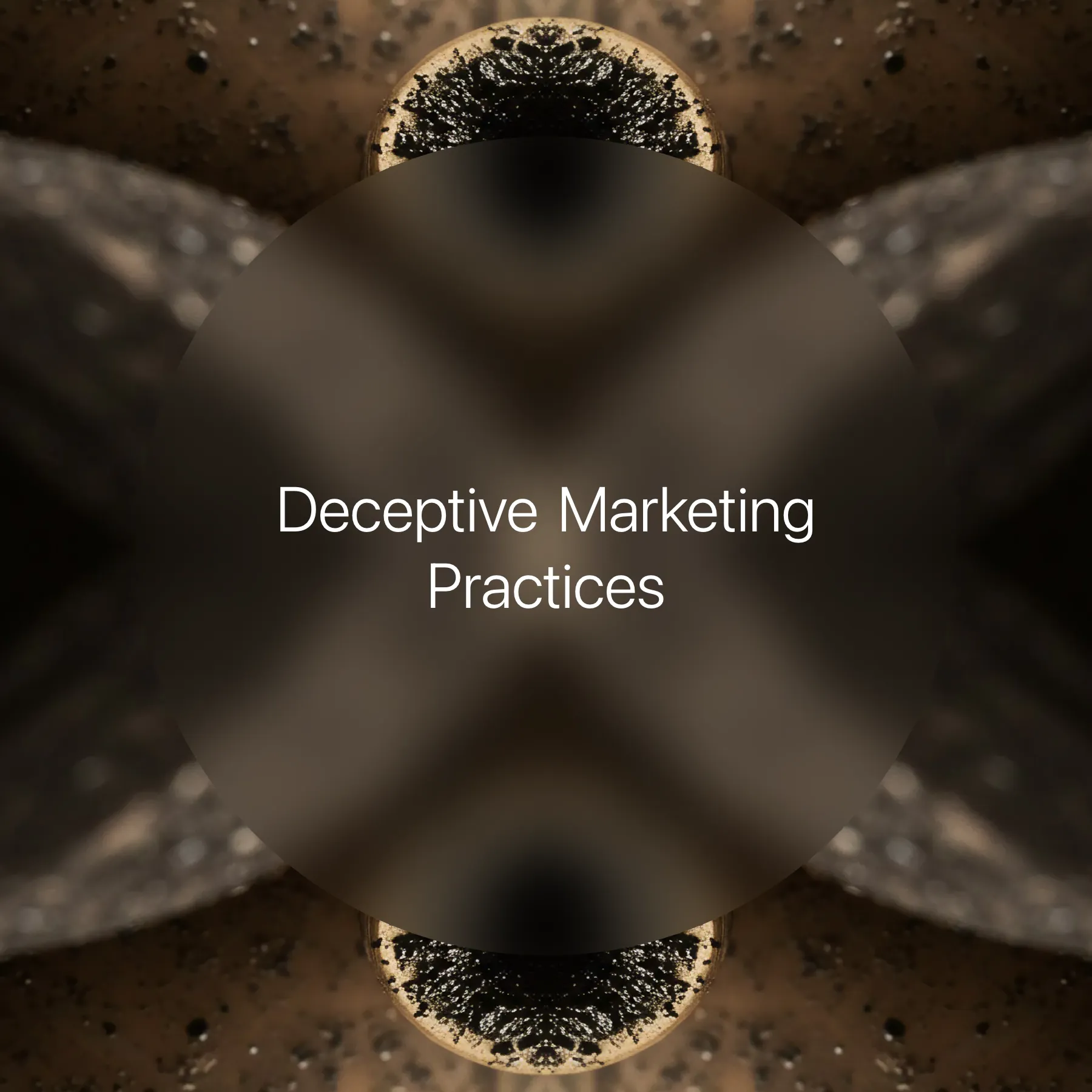In today’s digital world, consumers are exposed to more advertisements than ever before. With just a scroll or a click, buyers encounter countless offers, promotions, and product claims. While many of these are honest sales strategies, a significant number rely on deceptive practices that intentionally misleads buyers into making uninformed or unnecessary purchases. Understanding how these tactics work is critical for today’s consumers who want to make smart, educated buying decisions.
This article explores the psychology behind misleading marketing, common tactics used by brands, real-world consequences, and practical ways to identify and avoid manipulative advertising.
The Rise of Misleading Marketing in the Digital Era
The digital marketplace has grown rapidly over the past decade. E-commerce platforms, social media advertising, influencer marketing, and targeted campaigns have created an environment where companies can reach millions instantly. Unfortunately, this same accessibility has opened the door to deceptive marketing strategies.
Some brands prioritize profits over ethics, crafting advertisements that exaggerate benefits, hide defects, or present false guarantees. This not only misleads buyers, but also creates mistrust in the market as a whole.
Why Misleading Ads Are So Effective
To understand why misleading advertising works, we must look at the psychology behind consumer behavior.
1. Emotional Appeal
Many misleading ads target emotions—fear, excitement, insecurity, or desire. A skincare product promises “instant transformation” or a financial scheme guarantees “fast wealth.” When emotions run high, buyers often make impulsive decisions.
2. Authority Bias
Consumers tend to trust endorsements from experts, celebrities, or influencers. Even when these endorsements are exaggerated or not genuine, they still influence purchasing choices and misleads buyers into believing a product is credible.
3. Fear of Missing Out (FOMO)
Limited-time deals, countdown timers, and “only 3 left in stock” warnings trigger urgency. Even when these claims are false, the fear of missing an opportunity pushes buyers to act quickly, sometimes without thinking.
4. Visual Manipulation
Digital editing tools allow brands to enhance product images, hide defects, or create unrealistic expectations. When a product looks too perfect online, it often misleads buyers about its true quality.
Common Ways Companies Mislead Buyers

Misleading marketing takes many forms. Some tactics are subtle, while others are outright fraudulent. Here are the most common ways buyers are deceived:
1. False Claims and Exaggerations
Some companies claim their products deliver results that are impossible or scientifically unsupported. Examples include:
- Weight-loss supplements promising results “without diet or exercise”
- Beauty products claiming to reverse aging “overnight”
- Tech devices that exaggerate battery life or performance
Such claims are designed to mislead buyers by creating unrealistic expectations.
2. Hidden Fees and Costs
A product may appear affordable upfront, but additional charges like shipping, service fees, or subscription renewals are hidden until checkout. This unethical tactic traps buyers into paying more than expected.
3. Misleading Product Images
Online retailers sometimes display high-quality images that do not match the actual product. Clothing may appear better fitted, furniture may seem larger, and colors may be altered. This tactic especially misleads buyers in e-commerce, where they cannot inspect items physically.
4. Fake Reviews and Testimonials
Many brands purchase fake reviews or pay influencers to give biased feedback without disclosure. Since reviews heavily impact buying decisions, this tactic directly misleads buyers into trusting a product that may not meet expectations.
5. Bait-and-Switch Tactics
A company advertises a product at an unusually low price to attract shoppers. Once customers click, they find the product “out of stock” and are redirected to a more expensive version. This manipulative tactic tricks buyers into spending more than intended.
6. Drip Pricing
Drip pricing involves revealing costs gradually. For example, a hotel booking website may display a low nightly rate but add taxes, service charges, and cleaning fees later. The final cost becomes significantly higher, but by then the buyer may have committed emotionally to the purchase.
Industries Where Buyers Are Commonly Misled
While misleading marketing exists across many sectors, some industries face more frequent issues.
1. Beauty and Skincare
Bold claims like “age reversal” or “instant glow” often misleads buyers with promises unsupported by scientific research.
2. Health and Fitness
Supplements, detox teas, workout equipment, and diet plans routinely exaggerate results.
3. Technology and Electronics
Fake brand names, exaggerated specifications, and misleading comparison charts often trick buyers.
4. Travel and Hospitality
Hidden fees, manipulated reviews, and deceptive “best price” claims are widespread.
5. Fashion and Apparel
Fast-fashion websites often use enhanced photos that don’t match the actual fabric or fit.
The Consequences of Misleading Marketing
Misleading advertising doesn’t just cause financial loss—it carries deeper consequences.
1. Financial Harm to Consumers
Buyers may spend money on ineffective, poor-quality, or unnecessarily expensive products.
2. Loss of Trust
When brands repeatedly misleads buyers, consumers lose trust in the marketplace as a whole.
3. Damage to Reputation
Businesses found guilty of deceptive marketing often face legal consequences, public backlash, and long-term damage to their brand image.
4. Emotional Stress
Feeling tricked or manipulated can cause frustration, regret, and stress among consumers.
How Consumers Can Protect Themselves
The good news is that consumers can take proactive steps to avoid deceptive advertising.
1. Read Reviews Carefully
Look for detailed, verified, balanced reviews—not vague or overly positive ones.
2. Research the Brand
Check the company’s website, social media presence, and customer service reputation.
3. Don’t Trust “Too Good to Be True” Claims
Unrealistic promises often signal misleading marketing.
4. Compare Before Purchasing
Compare similar products across different retailers to avoid manipulated pricing.
5. Check Return Policies
Scam-prone brands often have unclear or restrictive return policies that further misleads buyers after purchase.
6. Pay Attention to Fine Print
Many hidden fees or disclaimers are buried in small text. Reading carefully helps prevent surprises.
What Businesses Should Do to Avoid Misleading Customers
Ethical businesses must prioritize transparency and honesty. Here’s how brands can market responsibly:
- Use clear language and avoid exaggeration.
- Provide accurate product images and descriptions.
- Disclose sponsorships and paid partnerships.
- Display pricing and fees upfront.
- Encourage authentic customer feedback.
Companies that value integrity not only avoid misleading buyers but also earn long-term customer loyalty.
Conclusion: Awareness Is the Best Defense
Deceptive marketing continues to evolve, but so does consumer awareness. By understanding how advertising misleads buyers, people can develop stronger shopping habits, recognize red flags, and make informed decisions. Ethical businesses must prioritize transparency and honesty, while buyers remain vigilant and critical.
In an era where information is everywhere, the smartest consumers are those who question, compare, and research before they buy. Knowledge—not impulse—is the strongest protection against being misled.





